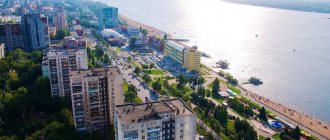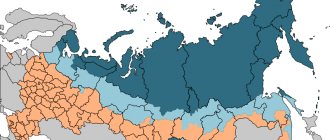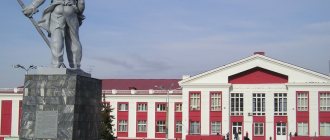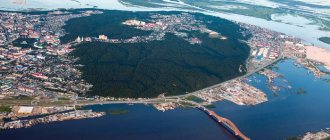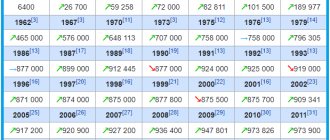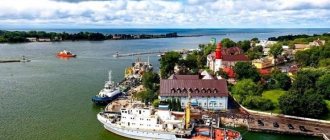City in Moscow region, Russia
| Old Kupavna Old Kupavna | |
| City [1] | |
| Residential area in Staraya Kupavna | |
| Flag Coat of arms | |
| Location Staraya Kupavna | |
| Old Kupavna Location Staraya Kupavna Show map of Russia Old Kupavna Staraya Kupavna (Moscow region) Show map of the Moscow region | |
| Coordinates: 55°48'N 38°10'E / 55.800°N Latitude 38.167°E / 55,800; 38.167 Coordinates: 55°48'N 38°10'E. / 55.800°N Latitude 38.167°E / 55,800; 38,167 | |
| A country | Russia |
| Federal subject | Moscow region [1] |
| Administrative region | Noginsk district [1] |
| Town | Old Kupavna [1] |
| First mention | 14th century |
| City status from | 2004 |
| Height | 140 m (460 ft) |
| population size (2010 Census) [2] | |
| • General | 21 811 |
| • Evaluate (2018) [3] | 22099 ( + 1,3% ) |
| Administrative status | |
| • Capital from | G. Staraya Kupavna [1] |
| Municipal status | |
| • Municipal district | Noginsk municipal district [4] |
| • Urban village | Urban settlement Staraya Kupavna [4] |
| • Capital from | Urban settlement Staraya Kupavna [4] |
| Timezone | UTC+3 (MSK[5]) |
| Postal code [6] | 142450 |
| Dial code(s) | +7 49651 |
| OKTMO ID | 46639103001 |
| Web site | stkupavna.munrus.ru |
Old Kupavna
(Russian: Staraya Kupavna, Staraya Kupavna) is a city in the Noginsk District of Moscow Oblast, Russia, located on the left bank of the Shalovka River (Klyazma's tributary) 23 km (14 mi) east of Moscow. Population: 21,811 (2010 census); [2] 21,433 (2002 census); [7] 25,052 (1989 census). [8] .
Links[edit]
Notes[edit]
- ^ abcdef Resolution No. 123-PG
- ^ a b Federal State Statistics Service (2011). “All-Russian Population Census 2010. Volume 1" [All-Russian Population Census 2010, vol. 1]. All-Russian Population Census 2010 [All-Russian Population Census 2010]
. Federal State Statistics Service. - "26. The size of the permanent population of the Russian Federation by municipalities as of January 1, 2022". Federal State Statistics Service. Retrieved January 23, 2022.
- ^ abcd Law No. 82/2005-OZ
- "On the Calculation of Time". Official Internet portal of legal information
. June 3, 2011. Retrieved January 19, 2022. - Post office. Information and computing center of OASU RPO. ( Post office
).
Search for postal service objects ( postal Search for objects
) (in Russian) - ↑
Federal State Statistics Service of Russia (May 21, 2004).
“The population of Russia, the constituent entities of the Russian Federation as part of federal districts, urban settlements, settlements, settlements of 3 thousand or more people” [Population of Russia, its federal districts, federal districts, districts, urban settlements, rural settlements - administrative centers and rural settlements with a population of more than 3000] (XLS). All-Russian Population Census of 2002 [All-Russian Population Census of 2002]
. - “All-Union Population Census of 1989. The current population of union and autonomous republics, autonomous regions and districts, territories, negative phenomena, urban settlements and rural district centers” [All-Union Population Census of 1989: current population of union and autonomous republics, Autonomous regions and districts , territories, regions, districts, urban settlements, villages performing the functions of district administrative centers. All-Union Population Census of 1989 [All-Union Population Census of 1989]
.
Institute of Demography of the National Research University: Higher School of Economics [Institute of Demography of the National Research University: Higher School of Economics]. 1989 - via Demoscope Weekly
. - Interfax.ru. The ex-mayor of Staraya Kupavna was sentenced to seven years in prison (in Russia)
Sources [edit]
- Governor of the Moscow region. Resolution No. 123-PG of September 28, 2010 “On registration data of administrative-territorial and territorial units of the Moscow region,” as amended. Resolution No. 252-PG dated June 26, 2015 “On introducing changes to the registration data of administrative-territorial and territorial units of the Moscow region.” Published: “Information Bulletin of the Moscow Region”, No. 10, October 30, 2010 (Governor of the Moscow Region. Resolution No. 123-PG of September 28, 2010 “ On the inventory of administrative-territorial units of the Moscow Region”
as amended by Resolution No. 252- PG dated June 26, 2015 “
On amendments to the inventory count”).
Data from administrative-territorial entities and territorial units of the Moscow region .). - Moscow Regional Duma. Law No. 82 / 2005-OZ of February 28, 2005 “On the status and boundaries of the Noginsk municipal district and newly formed municipalities within it,” as amended. Law No. 108 / 2015-OZ of July 1, 2015 “On amendments to the Law of the Moscow Region “On the status and boundaries of the Noginsk municipal district and newly formed municipalities within it””. Came into force on the date of official publication. Published: “Daily News. Moscow Region”, No. 44, March 12, 2005 (Moscow Regional Duma. Law of February 28, 2005 No. 82/2005-OZ “ On the status and boundaries of the Noginsk municipal district and the newly formed municipalities included in it”
, as amended, introduced by the Law of July 1 No. 108/2015-OZ, 2015
On amendments to the Law of the Moscow Region “On the status and boundaries of the Noginsk municipal district and the newly formed municipalities within it
.” Valid from the date of official publication.).
Kupavna station
The station is located 32 km from the Kursky railway station, travel time from the station is about 42 minutes.
The station was founded in 1898 and had the freight name “Post 27th verst” of the Nizhny Novgorod Railway, later - “Post Kupavna”, and since 1916 simply “Kupavna”. The station received its name from the factory village of Staraya Kupavna, which it served at that time.
Origin of the name "Kupavna"
The word Kupavna corresponded to a picturesque, beautiful area. Several rivers flowed near the village: Kupavna, Chudinka, Kudinka and Shalovka. In addition to rivers, there were lakes with mirror water. One of them was located on the site of today’s Ozerki, the other on the territory of the Akrikhin plant. The latter existed until the forties of the twentieth century.
But where does such a euphonious name come from? In Rus' it often happened that a village located next to a river took its name. But where did the name Kupavna by the river come from?
Researchers write that this is what beauties were called in Rus' - “pretty beautiful woman.” At A.S. Pushkin: “But she herself is majestic, she stands out like a peahen...” Pava - Kupava - Kupavna is a beauty. In Dahl’s explanatory dictionary: Kupavaya is a lush, proud beauty... Pava.
However, it is believed that the word “kupavna” is associated with the name of the flower. Dahl writes in his explanatory dictionary that kupava is a water plant, a water lily.
Kupavna, kupavka is a flowering plant that is found in Russian folk botanical names. In the Vladimir province, a flower with a fluffy corolla is called a kupavka. In Tver, Novgorod and other regions, this is the name given to aquatic or marsh plants growing in damp and swampy places. The village was located among the peat bogs of Biserov and Kudinov. This legend is perhaps closest to the truth and is reflected in the image of the coat of arms of Staraya Kupavna, which in the center, next to the Vladimir milestone, depicts a river flower, which, according to the author of the coat of arms, gave the name to the village.
Dachas
In addition to all the villages and towns, a huge part of the territory of Kupavna is occupied by dachas, or so-called gardening partnerships. They began to appear in Kupavna at the same time as in the rest of the near Moscow region - in the 50s - 60s. The construction of Kupavna with dachas began from its very center. The area was built up, bounded from the west by the “Biserovsky” lake, from the north by fish farm ponds, from the east by a field and forest, and from the south by the “Gorkovsky” direction by the railway. Before the appearance of dachas, these places were peat bogs. By this time, peat extraction was no longer carried out in Kupavna, and this land was practically not used. It was given over to the first summer residents for development, for whom the first few years were very difficult. Low-lying, swampy areas had to be drained. Carry earth and sand into areas to raise the soil level. What this land looked like half a century ago is very different from what it looks like now. In many ways, this is the result of the efforts of those very first summer residents of the sixties.
So, approximately in the mid-late fifties, in the northern part of this area, near the Rybkhoz ponds, one of the first to appear was the gardening partnership “Name of the 800th Anniversary of Moscow” and “Chaika”. Around the same time, perhaps with an interval of one or two years, and a little to the south, the gardening partnership “Work and Rest” began to be built, which is discussed in the novel “Kupavna” by Alexei Varlamov. Even further south, “OrgStankinProm” and “Rainbow” appeared. Behind the railway line, more “Work and Rest” sections were built, as well as the “Khimik-4” gardening partnership. A “Textile Worker” appeared near the lake. Dachas occupied larger and larger areas of once deserted places. Vacant lots turned into villages, and more and more people came here in the summer every year. It is interesting that the development did not go from the Kupavna station deep into the area, but vice versa towards the station. So, the summer residents of the first years walked to their plots not along the streets, but through open spaces.
Later, in the 60s and 70s, sections reached the “Gorky” direction of the railway. “ZIL”, “Yubileiny”, “MinVuz”, “GSPI-10”, “VOS”, “Stroitel” appeared. Until this time, in their place there were still peat fields where cows grazed and children walked. Behind the railway line, SamTrest (now Sadko), MosGiproTrans, and Lucky Kraski appeared. Sections appeared on the way to the quarry: “Meliorator”, “Timeryazevskoe”, “Otradnoe”, near the forest behind the field.
Biserovskoye Lake
Biserovskoye Lake was in Kupavna even when no one called these places Kupavna. It was back when no one lived in this territory. It was here millions of years ago.
Biserovskoye Lake is the closest relict lake to Moscow. The origin of the lake is ancient, probably from the Ice Age. It is the only lake of glacial origin in the entire Moscow region. It was once very large. This is evidenced by the bed of lakes, located 1 km from Biserovsky and on the same level and line with it. The shores of the lake are low and almost undeveloped. The length of the lake is 1600 meters, and the width is 800 meters, the area is 105 hectares, the greatest depth is 5 meters.
3 streams flow into the lake. Only the Shalovka River flows out of the lake, then it flows through and between the Rybkhozovsky ponds, past the village of Kolontaevo and eventually flows into Klyazma.
Several legends and fables are associated with Lake Biserovskoye.
According to one, the lake was named “Biserov” after Catherine II, who was passing by, admiring the beauty of the place, stopped here. Coming close to the water, she carelessly scattered beads into the water. The servants were ordered to collect it. Naturally, the servants were unable to collect all the beads, and from then on the lake began to be called Biserovo.
Before the revolution, the lake belonged to the Donskoy Monastery. On the eastern shore there were monastery wooden buildings in which monks lived, observing the state of the lake, in which, in addition to ordinary freshwater fish, sterlet was bred, because, as is known, it lives in clean water. In the twenties, the monastic economy was liquidated.
Sand quarry
In addition to peat, in the surface layers of the soil in the Noginsk region there are many sandstones and sands. This could not but be used. The young Soviet state needed a lot of cheap building material. Therefore, in the twenties and thirties, massive geological exploration was started. So, for example, from May 16 to June 28, 1928, exploration of clay deposits was carried out in the Kudinovo area, a village located several kilometers east of the Kupavenskoye quarry (clay mining and brick production have long been carried out there). Subsequently, industrial development of clay began there. And on the site of an old plant for the production of refractory bricks, the Kudinovsky ceramics plant was built.
In Kupavna, large-scale sand mining began in the thirties. Sand, which lies shallow in Kupavna, is a high-quality and inexpensive material. This is how sand quarries with huge dunes and ponds appeared in Kupavna, which were the result of mining.
The quarries are divided into the “old” one, which is located to the left of the railway line, if you go towards Staraya Kupavna. They started developing it earlier than everyone else, but despite this it is still being developed, its depth is up to 25-30 meters. “New”, the one located to the right of the railway line. They began to develop it later, but now production on it has already ceased; its depth is 9-11 meters. Apparently the supply of sand in it was less than in other quarries. The “Kudinovsky” quarry is located to the east, in a field, closer to the village of Kudinovo. They began to develop it later than everyone else, probably in the sixties and seventies, but nevertheless it is also very deep, there are places in it up to 19 meters deep. There is another small quarry located closer to Staraya Kupavna, to the reinforced concrete plant, its depth is 18 meters.
Despite the fact that the quarries are an industrial site, they have very beautiful and pleasant landscapes. Sand pits are a favorite place for swimming and fishing, and not only for Kupvin residents. People come here for this from many places in the Moscow Region.
An article was used from the site https://kupavnaweb.narod.ru/place.html
Story
Kupavna was first mentioned in the oldest of the Moscow grand-ducal treaties - in the “pre-conclusive” charter of the sons of Ivan Kalita: Grand Duke Simeon the Proud with princes Ivan and Andrey. In it, among the villages that went by agreement between the brothers to the Grand Duke Simeon, the “new village on Kupavna” is also named. This document dates back to approximately the spring and summer of 1348.
The village is mentioned for the second time already in the will of Grand Duke Simeon Ivanovich. This “new” village, according to the dying will of the Grand Duke, should, among many other villages, go to his wife. According to the latest research data, this document can be dated quite accurately to April 24-25, 1353. This is the time of the death of Prince Simeon the Proud during the “Black Death” epidemic or plague that came from Europe, decimating entire villages. This date is considered the founding date of Kupavna.
In the city archives there is also a mention of “Witch’s Corner” - that’s how this village was called in the 17th century. In 1745, the Kupavino factory became the largest silk establishment in Russia. The organization of silk production in Kupavna marked the beginning of the industrial development of the village. In 1797, “Peter August Karlovich, a St. Petersburg merchant and Moscow manufacturer, founded a chemical plant. This is how the chemical industry of Staraya Kupavna began to actively develop.
Also, one of the first watch factories in Russia appeared in Kupavna. It produced 185 types of watches a year, several watches were sent to His Imperial Majesty.
A textile factory has been operating in Kupavna since the 18th century. During the Patriotic War of 1812, the village was in the hands of French troops under the command of Marshal Ney for 18 days[3].
During the Great Patriotic War, the Kupavina Textile Factory produced overcoat cloth, fabrics for trousers, jackets, hats, technical cloth, and cloth for shoulder straps for the Soviet Army. Pharmaceutical production was evacuated to the city of Irbit in October 1941. During the war, the Akrikhin plant itself produced the incendiary liquid KS, known as the “Molotov cocktail,” which was used to blow up tanks. As well as medications, including white and red streptocide. During the Great Patriotic War, a reinforced concrete products plant was organized.
Culture
- The city has a chemical and pharmaceutical plant built in 1981, founded in 1936.
- Since 1998, the weekly newspaper “Staraya Kupavna” has been published. Since the end of 2005, the Staraya Kupavna newspaper has been published as an insert to the Volkhonka newspaper, with a circulation of no more than 1000 copies.
- “Alternative Newspaper” has been published since July 2004. During the period 2004-2006, the circulation of Alternative Newspaper increased to 10,300 copies. In 2005, the editor-in-chief of Alternative Newspaper, Anatoly Pleshan, won the election for the head of the Staraya Kupavna Municipal Municipality.
- There is a city museum (until 2015 - the Museum of Labor Glory). Free admission.
- On September 8, 2008, the newspaper “Molodaya Kupavna” was registered and published for a short time since May 2009.
- On September 7, 2008, the video channel “Old Kupavna” was opened.
- On August 13, 2009, the editors of the online publication “Staraya Kupavna” and the “Continuum Est - new technologies in information services” foundation opened a virtual photo club for amateurs and professionals “Flashback” (Frame).
Literature
Moscow (0—16)¹
Moscow region: Reutov (16) | Balashikha (16-30) | Old Kupavna (36—37) | Obukhovo (42—44) | Noginsk (50-60)
Vladimir region: Pokrov (103) | Cockerels (121) | Lakinsk (150) | Vladimir(180—192) | Vyazniki (291) | Gorokhovets (330)
Nizhny Novgorod region: Dzerzhinsk (384, 402) | Nizhny Novgorod
(414) | Kstovo (440) | Lyskovo (502)
Chuvashia: Cheboksary
(651) |
Kugesi
(660) | Tsivilsk (683)Tatarstan: Kazan
(820) | Yelabuga | Naberezhnye Chelny (1055) | Menzelinsk
Bashkortostan: Verkhneyarkeyevo
(1193) |
Durtyuli | Kushnarenkovo
|
Ufa
(1342)see further: M-5 "Ural"
¹ The number in brackets indicates the distance from the center of Moscow in kilometers: to the Nizhny Novgorod region - according to topographic maps, then - according to a GPS map.
Economy
More than 30 organizations operate in the city’s industrial zone, the largest of which are:
- LLC "Research and Production Enterprise Rogneda" - production of paint and varnish products;
- JSC "Chemical and Pharmaceutical Plant "Akrikhin"" - production of medicines;
- CJSC "Base No. 1 Khimreaktiv" - production of chemical products;
- CJSC "Textile Company "Kupavna"" - production of woolen fabrics;
- OJSC "Bonolit-Stroitelnye Resheniye" - production of blocks from cellular aerated concrete.;
- OJSC "Moskhim" - provision of a range of services for storage and processing of goods;
- OJSC "Lakra Sintez" - production of paints and varnishes;
- CJSC "Kupavino Experimental Mechanical Plant" - production of mechanical products;
- OJSC "Biserovsky Fish Factory" - growing carp and trout, processing fish products, organizing paid fishing;
- LLC “Production Company “Techno-TT”” - production of technological and neutral kitchen equipment for restaurants for bars and other public catering establishments;
- LLC "SoyuzKhimReaktiv" - production of chemical products;
- OJSC "Plant "Khimreaktivkomplekt"" - production of medicines, chemical reagents, sets of various organic substances for educational institutions;
- LLC “Logistics Center “Kupavna”” - providing a range of services for storage and processing of goods;
- CJSC "Kupavnareaktiv" - sale of chemical products;
- LLC "Industrial and commercial company "Galreakhim"" - production of galvanic cells;
- OJSC “All-Regional Association “Isotope”” - production of isotope products;
- LLC "InoxMarket" - production of rolled metal from stainless steel;
- LLC "Akos Tex" - production of hosiery.
Russian Orthodox Church
Staraya Kupavna is known for its Holy Trinity Church (construction completed in 1751); the first information about the Church of the Life-Giving Trinity in its place dates back to the 17th century. Nowadays the temple is operational (in 1937-1990 it was closed for worship, it was used as a grocery store, a workers' canteen, and a disco). Over the past 10 years, renovation work has been going on at the Holy Trinity Church, but services have not stopped. Currently, thanks to parishioners, the temple has been practically restored.


